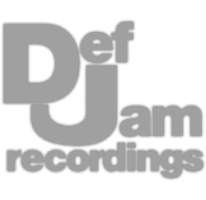Professional Analog Mastering.
Professional Analog Mastering.










In this video, I want to showcase the ideas in a logical way - so each chapter relates to the order in which I typically mix a session. I won’t cover everything to do in a mix session, but I’ll show the steps that are fundamental to creating a clean mix.
Before I begin adding any processing, I first want to ensure that I have my routing in order - this is going to make it easier to mix. I usually say something along the lines of ‘This is just how I do it,’ but when it comes to organizing and starting a mixing session, I genuinely think this is the best way to go about it, and I really want to stress how much I recommend it.
So, first, I’ll organize similar instruments and put them together. So all my guitar tracks go next to each other, all my percussive tracks go next to each other, and so on. Then, I’ll color-code the tracks and their respective channel strips.
I know this seems annoying, but the less I have to think about where a particular track is in the session, the more I can focus on the sound.
Once I have all of my instruments grouped and color-coded, I’ll change their outputs to buses. For example, all of the drums will go to a stereo bus, and all of the guitars will go to another stereo bus, and so on.
These busses each have corresponding auxiliary tracks - which I’ll title, and use the same color coding that I used for the tracks. So if the drums are blue, the drum bus will be blue, etc.
This lets me adjust the level of individual tracks if needed - so if I want more of the snare, I can affect the track, but if I want more or less of the overall drums, I can just affect the drum bus’s fader.
Later on, this will also make it super easy to collectively process an instrument group while still having control over the individual signals that make up that group. It also makes it easy to bounce out stems, which can be really useful if the track will be in a video or you need to send tracks to various musicians for review or practice.
So, before we begin to introduce any processing, let’s take a listen to the song we’re working on. I’ll use the routing I detailed here and show how simple it is to quickly adjust levels, solo instrument groups, and just generally navigate the session.
Watch the video to learn more >
Next up, let’s insert equalizers where needed - before I add any additive processing or plugins that amplify anything, I’m going to ensure my low frequencies are taken care of.
High-pass filters are really simple but really powerful as well, so here’s what I recommend.
Start with a 12dB/Octave slope and attenuate instruments that occupy the mid to high ranges - typically guitars, synths, vocals, and so on.
The trick is to avoid cutting higher than a signal’s fundamental. The fundamental is usually represented as a high amplitude spike - as the note changes, naturally, the frequency changes.
With something like a kick, you’ll notice the fundamental is static or one note (unless you’re working with an 808), but on a melodic instrument, the fundamental’s frequency shifts with each note.
So, cut to right below the lowest note or fundamental. This almost guarantees that all musical aspects are left intact, while unmusical sounds like rumble, plosives, hum, and so on get attenuated.
The caveat to this comes with the lowest frequency instruments - for example, if the kicks fundamental is lower than about 70Hz, a high-pass will likely do more harm than good. That said, it’s always best to use your ears and determine what’s best.
If you don’t want to add these filters to all the tracks, or if that takes up too much CPU, you could add them to the buses, but I think addressing it on an instrument-by-instrument basis is a little better.
Once we have everything cut up to the fundamental, it’s a good idea to see if any of the fundamentals can be cut out - I almost never do this to super important instruments like the lead vocal, but it can help a lot if done on BGVs, doubled guitars, supporting instruments, and so on.
This ensures that the lows are primarily occupied by the bass, the kick, and the vocal’s lowest notes - resulting in a great foundation on which we can build our mix. One thing to be mindful of when using these filters is how they can affect multi-tracked instruments, but I’ll cover this in more detail in a future chapter.
For now, let’s take listen to our mix with these filters added and notice how it sounds cleaner, the lows sound more focused, and how it already feels like the instruments are competing less for space.
Watch the video to learn more >
Let’s revisit the equalizers we used on the kick and bass. Again, depending on their fundamental frequencies, we may or may not have introduced an HP filter - regardless, we can improve the relationship between our kick and bass with these EQs.
I’m using this Pro-Q 3 that lets me easily find conflicting frequencies, so on the bass, I’ll monitor the kick and see if and where the bass and the kick are overlapping too heavily.
If they are, which happens more often than not, I’ll use a bell filter on the bass and attenuate the frequency of the kick’s fundamental.
Since the bass guitar’s fundamental changes frequency, it’s a lot easier to attenuate the kick’s fundamental on the bass than to attenuate the bass’s multiple fundamental frequencies on the kick.
Try not to make this cut too intense; it can become noticeable or take away too much of the bass - it’s best to just use your ear and vary the filter’s amplitude until everything seems to fit right.
Additionally, when you do this, be sure to listen to the kick and the bass in the context of the full mix - if you solo the kick and bass, you won’t get a realistic idea of the sound.
Instead of an EQ, you could use a dynamic EQ or MB compressor with the kick side-chained. This way, the attenuation only occurs whenever the kick hits. I usually find a static or regular EQ works just fine, but know that it’s an option and can improve the sound under the right conditions.
Let’s take listen to this filter being added and notice how the kick and bass sound a little more balanced and how the lows, in general, have a cleaner, more balanced sound.
Watch the video to learn more >
In Chapter 2, I briefly mentioned how HP filters can cause issues when working on a multi-tracked instrument, so let me briefly explain.
Without getting super in-depth about it, an HP filter alters the phase rotation of a track a good amount - normally, this doesn’t matter too much, but when combined with signals from the same instrument, it can cause problems.
For example, say I have a stereo-tracked acoustic guitar - both microphones are capturing the same performance but with slight differences.
If I were to use a high-pass filter on one of the two recorded signals, the phase rotation caused by the filter would likely cause destructive interference between the two recorded signals. To fix this, I’ll either need to remove the filter or I’ll need to use the same high-filter settings on the other track.
It takes a good amount of detail to explain why this happens - so if you’d like a more in-depth explanation, we made a video called Fixing Phase, which covers everything you need to know about phase relations.
For now, let’s listen to this example and notice how the acoustic guitar sounds worse when I use an HP filter on one and not the other.
Watch the video to learn more >
After my initial EQ has been introduced, it’s time to use gating and compression. Typically, gating gets ignored or overlooked, but gating or downward expansion can be a really useful tool, especially before any additive processing.
If a signal has some unwanted noise, common with a bass or guitar, gating can be used to attenuate the noise during quieter moments, as well as add to the musicality and rhythm.
If you time the gating right, we’re basically increasing the dynamic range in a way that matches the timing of the instrument.
For example, if I gate a bass guitar and time the downward expansion with the performance, it’ll add to the percussive nature of the bass, in turn supporting the song’s rhythm and natural cadence.
Too aggressive of settings will cause a lack of detail or an unnatural sound, so it’s best to use a softer knee for the gating, and a smaller range - 6dB is a good starting point.
Once signals have been gated, which doesn’t need to happen for every signal, I’ll start introducing something I consider additive processing: peak-down compression.
Although peak-down compression causes attenuation, the point is to control the peaks and then boost the signal afterward - in turn, amplifying the quieter parts of the signal and increasing the detail of a track.
If I were to use peak-down compression and subsequent make-up gain as the first insert for a track, then some of the unmusical aspects that I attenuated with various High-Pass filters would be amplified.
That’s why I save compression for later.
How you compress and the settings you use depend heavily on the timbre you’re trying to create - I typically go for an upfront sound with my compression, so I like to use a softer knee, a moderate ratio, and automatic makeup gain.
If it’s available, I’ll also use some lookahead to capture the peak quickly, in turn ensuring quieter details of the transient are captured and amplified.
Let’s take a listen to compression being introduced to various instruments - I’ll use smoother compression on the bass, maybe VCA or optical, then use FET compression on the kick with a quick attack and release to add some distortion to the kick’s transients.
For the vocal, I’ll try some different types out until I find what gives it an enjoyable and upfront sound.
Let’s take a listen to gating and compression being introduced and notice how everything sounds more detailed, upfront, and louder.
Watch the video to learn more >
Saturation is usually thought of as a distinct form of processing, which it is, but it can be boiled down to mostly subtle soft-knee compression and harmonic distortion.
Harmonics play the biggest role in the sound of saturation - they make a signal sound fuller due to psychoacoustics. Just as importantly, they equalize a signal by amplifying the frequencies occupied by the harmonics.
If we’re trying to create a clean-sounding mix, it’s crucial that we pick which harmonics are included and on what instruments - especially low-frequency instruments.
For example, say the kick is saturated, and the saturation type adds a strong second-order harmonic. It’s likely that this harmonic will amplify a frequency that heavily overlaps with the bass.
So similar to Chapter 3, we now have competition between the kick and bass for limited room.
Depending on the frequencies the kick and bass occupy, this may not be a problem, but it’s important to consider nonetheless. All-in-all, it’s best not to think of saturation as something that only makes a signal fuller - but to also keep in mind that it can cause interference if the harmonics amplify already occupied frequencies.
One more thing to consider - the saturation type used affects transients. For example, I find that tube saturation often increases the impact of transients, whereas tape often smooths them out. With that in mind, it may be best to use a clean tube setting on the kick to emphasize transients but avoid clashing 2nd order harmonics. Then, use tape on the bass to smooth it out.
Of course, using your ears is always the best way to determine if saturation types work well together since each plugin and hardware unit is different.
To illustrate this idea, let’s listen to saturation being added to the kick and bass that first causes them to clash - then, I’ll change the settings to emphasize the mix’s clarity.
Watch the video to learn more >
At this point in the mix, the dynamics are controlled, the signals are more balanced, and everything is starting to fit into place.
Now is a great time to add creative and time-based processing. So delays, reverb, modulation, chorusing, and similar types of effects.
It’s a lot easier to get a good sound when we first control the signal and then add these types of processors than if we were to use them first.
If I want a particular instrument to have a specific sound, for example, if I want a bright and spacious sound for the snare, I could reverberate it individually.
If I want a collective sound for an instrument group, I could add the processor to the bus - maybe a room reverb that affects all of the drums, or a collective delay on the BGVs, or something similar.
Once you’ve created any temporal or creative effects that you want, I’d recommend using 1 to 2 additional processors on the busses.
I usually find EQ, an Exciter like the plugin Fresh Air, or a saturator is what’s needed to either create a balanced and bright sound or create a collective sound, respectively.
The temporal effects will create space and/or add a stylistic aspect, but in a way that retains the clarity of the track due to when we introduced them. Then, the last couple of processors give us the control we need to make some last adjustments.
So, let’s take a listen to the mix. Before I show you the demo, I’m going to listen to it on my end and make any last-minute changes that are needed - maybe I’ll boost some of 2kHz on a vocal, or adjust the level of an instrument, etc. Keep in mind that more will need to be done before I’d call this mix finished, but notice how what we’ve done has given us a clean sound, on which we can make needed changes.